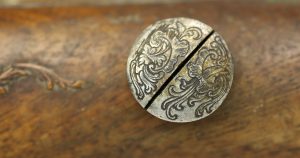A Brief History On Fasteners

Most people use fasteners without giving a second thought as to how they came about, and what they were used for in the past. In fact, most people imagine that fasteners are a very recent invention.
The truth is that these devices have been in place for quite a long time, and have played a major role in defining how human history has progressed over time. Of course, there are many new developments in the field. Inconel hex head cap screws and titanium cap nuts, for instance, are not more than a few decades old. However, fasteners as a general concept have been in use from as early as the Bronze Age.
The earliest recorded history of fastener use
The earliest recorded history of fastener use was during the third century. Archeological and other evidence shows that this was when metal rivets were first used. This makes a lot of sense, since this was also when metals were used. It would have been necessary to come up with a number of rivet types that could be used to fasten metal together, and using rivets was the most logical choice at the time.
The first use of screws and bolts
During the tenth century, there are indications that screws and combinations of nuts and bolts were in heavy use. This is particularly so in the military, where there were detailed records regarding the use of specific fasteners to put together large machines and vessels. During this time, the variety in the number and types of fasteners also increased as well. They were made out of a wider variety of materials including iron, copper and brass. Despite the fact that the fasteners were used most extensively for creating military machines, there are indications that people also started using them in other industries such as the manufacture of farming machines.
The characteristics of early fasteners
Most of the early fasteners such as rivets were very simple to use, as well as being very effective. They were essentially made out of a soft material that could be manipulated to hold two sheets of metal together. With time, however, the demands on the fasteners increased, and this means that the soft ones became gradually unsuitable. Since the structures that needed to be put together were heavier and placed more stress on the fasteners, stronger ones such as those made of steel were introduced. During the earlier ages, heat was used to make the tougher fasteners more malleable so that they could be put in place more easily.
In most parts of the world, the demand for fasteners such as nuts and bolts was correlated with the degree of industrialization. In the United States, for instance, the demand for large quantities of nuts and bolts increased dramatically in the mid-19th century, since this was during the war. This, combined with increased industrialization, has continued to drive the demand for all types of fasteners. It has also spurred research into the different ways in which they can be made and treated in order to achieve any objective.
About the Author

Started her career in the fastener world in 1991 working at Melfast as a receptionist, also handling clerical duties. Later on she began training in sales and also taking on purchasing duties. She is currently responsible for all purchasing and also is responsible for the sales of many accounts of Melfast.